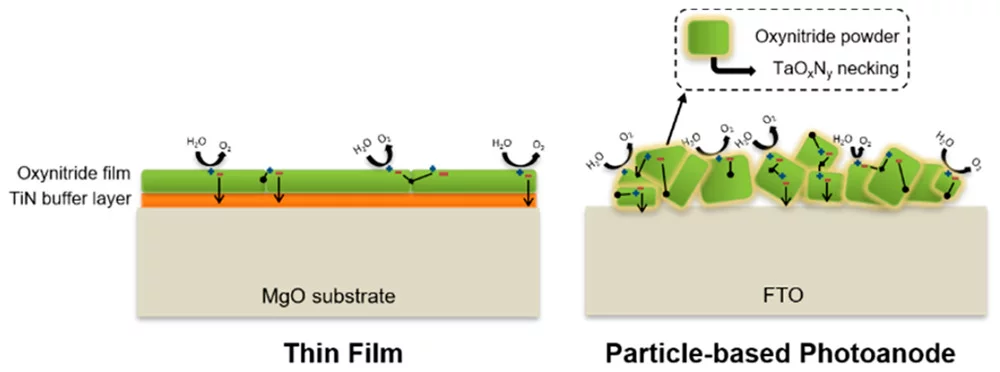Abstract:
The solar water splitting process assisted by semiconductor photocatalysts attracts growing research interests worldwide for the production of hydrogen as a clean and sustainable energy carrier. Because of their optical and electrical properties, several oxynitride materials show great promise for the fabrication of efficient photocatalysts for solar water splitting. This study reports a comparative investigation of particle- and thin-film-based photocatalysts using three different oxynitride materials. The absolute comparison of the photoelectrochemical activities favors the particle-based electrodes because of the better absorption properties and larger electrochemical surface area. However, thin films surpass the particle-based photoelectrodes because of their more suitable morphological features that improve the separation and mobility of the photogenerated charge carriers. Our analysis identifies what specific insights into the properties of materials can be achieved with the two complementary approaches
Keywords: oxynitride; photoanode; photoelectrochemistry; pulsed laser deposition; solar water splitting; thin films;
Facility: Thin Films and Interfaces, LMX, ENE, ETHZ, Center for Nanointegration Duisburg-Essen - University of Duisburg-Essen, International Institute for Carbon-Neutral Energy Research (I2CNER), Kyushu University, Japan
Reference: F. Haydous et al., ACS Appl. Energy Mater. 2 (1), 754-763 (2019), online January 4, 2019
Read full article: here

